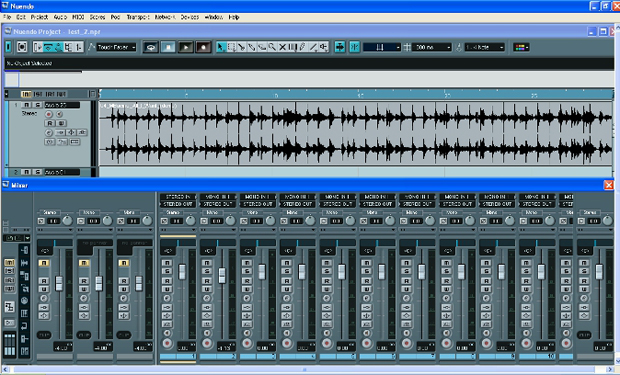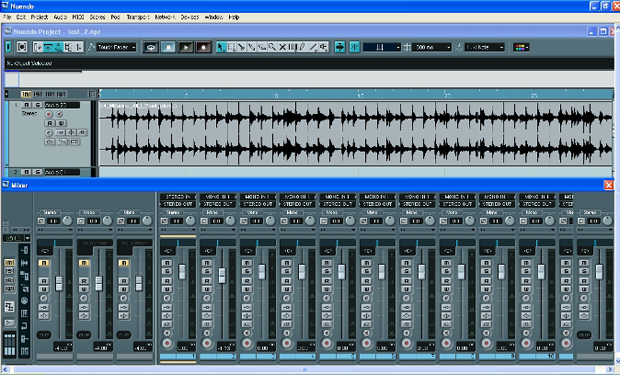Songcraft: Becoming Your Own Producer, Part 1

With a majority of today’s songwriters having powerful recording tools at their disposal, just a laptop’s click away, and the line between home and studio recordings blurring daily, writers/artists are now finding themselves, more and more, in the role of de facto producer when looking to capture their latest creations.
With that in mind, Songcraft’s “Becoming Your Own Producer” series will look to dissect, simplify and offer insight into the (sometimes daunting) process and art of DIY music production.
Pre-Production
OK, so you’ve just finished writing a great song and you’re excited to begin getting it down. Before you hit that virtual record button, here’s a pre-production checklist worth a run-through to help ensure your new tune is ready to hit the hard drive:
• Is your song concise? Are there sections that could be discarded or shortened in efforts to tighten up the overall structure?
• Are your song sections ordered in such a way that’s consistent with the genre you’re working in (e.g. in the pop genre, having a chorus that repeats at logical points throughout the song)?
• Write your song’s structure down on paper (verse, chorus, etc.) and see if it makes sense from that perspective. If you’re still not sure your structure’s the best it can be, pick a similar tune from a favorite artist that falls within your genre and dissect that song’s structure on paper as well. How does it differ from your song’s make up? What structural ideas can you borrow from that model song and apply to your tune?
Get The Pick Newsletter
All the latest guitar news, interviews, lessons, reviews, deals and more, direct to your inbox!
• Establish a tempo. Use your recording software’s click/metronome function and play around with how your tune feels when performed at different BPMs (beats per minute) till you find a tempo right for the song (more on tempo here).
• Establish a key. Many times, a song will be written in a key that may not suit the vocal range of whoever will be singing the tune on the recording. Play the song in various keys with singer on hand to make sure you have the right fit.
• Type up a lyric sheet for your song with chord changes included. Having this information in print will be a big help during the recording sessions to both singers and players alike. Typing the lyrics will also afford you, the writer, the opportunity to re-analyze, edit and improve your lyrics before recording commences.
• Record a demo. Before “official” recording begins, it’s helpful to get a simple version of your song down with just an acoustic guitar/piano and a vocal. This exercise will help you road test all the choices/tweaks you’ve made via the points listed above and will also give you a better sense of the overall quality of the tune when listening back. If the song moves you with just one instrument and a voice, you’ll know it’s ready and worthy of a proper recording. If it doesn’t excite you, better to learn that before you’ve recorded your 50th theremin overdub.
• Arrange. Begin to plan the specific musical parts that will populate your song and make decisions as to what instruments will play those parts on the recording (e.g. rhythm guitar parts will be played by acoustic guitars, bass lines will be played by synth bass, etc.). Try to create parts in addition to the basic — drums, bass, rhythm guitar/keys and vocal. Think of possibly adding some melodic lines played by different instruments that will artfully weave in and out of your recording, lending it some excitement and color. The possibilities are endless (but don’t go overboard). Get your ideas down on paper, creating a road map of sorts for your tune. Once you begin recording, this document will point your song in the right direction (despite any detours, welcome or unwanted) and will help get your song where you want it to go.
• Rehearse. If you’re planning on recording the basics of you song (drums, bass, rhythm guitar/keys) with a band live in the studio as opposed to building the song from the ground up in the overdub process, rehearse the players. Then rehearse them some more. If you intend to record to a click/fixed time, have the drummer practice playing along with said click at the song’s chosen tempo. When musicians are well prepared and know their parts, they tend to stop thinking their way through takes while recording and start to actually play/perform.
If you have any questions regarding pre-production, please leave a comment below.
Next time, “Becoming Your Own Producer” will “explore the studio space” with the recording phase of the production process.

Mark Bacino is a singer/songwriter based in New York City. When not crafting his own melodic brand of retro-pop, Mark can be found producing fellow artists or composing for television/advertising via his Queens English Recording Co. Mark also is the founder/curator of intro.verse.chorus, a website dedicated to exploring the art of songwriting. Visit Mark on Facebook or follow him on Twitter.
“Around Vulgar, he would get frustrated with me because I couldn’t keep up with what he was doing, guitar-wise – Dime was so far beyond me musically”: Pantera producer Terry Date on how he captured Dimebag Darrell’s lightning in a bottle in the studio
“He ran home and came back with a grocery sack full of old, rusty pedals he had lying around his mom’s house”: Terry Date recalls Dimebag Darrell’s unconventional approach to tone in the studio









